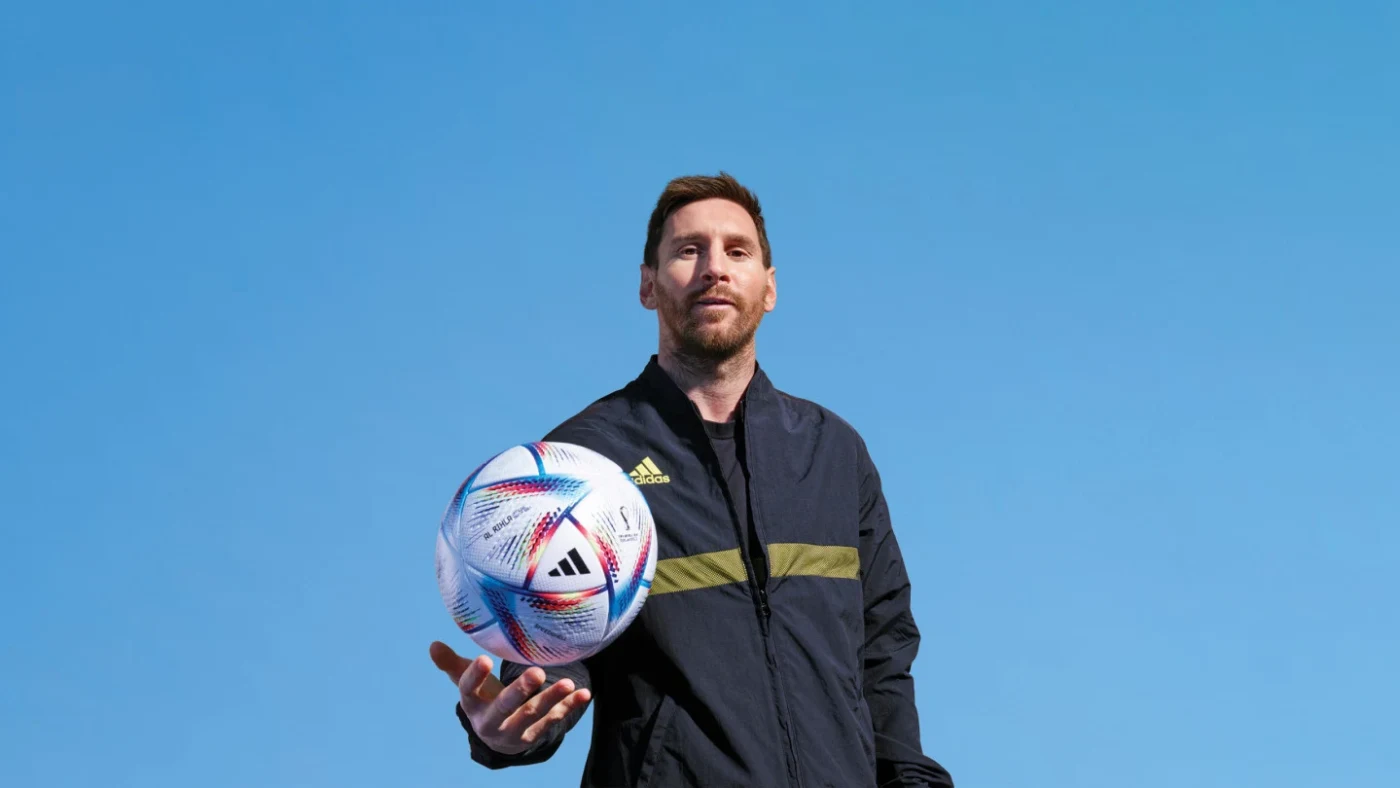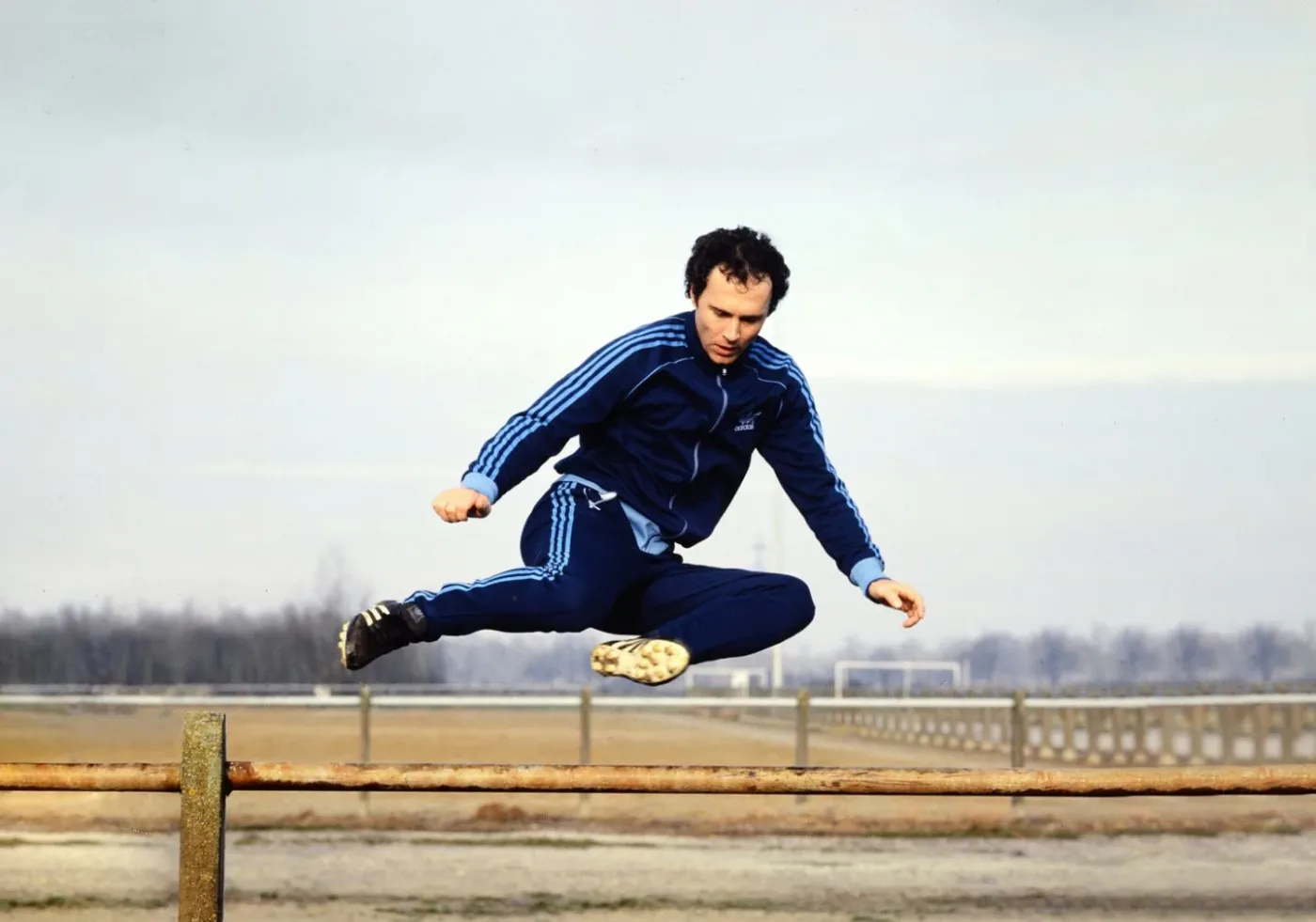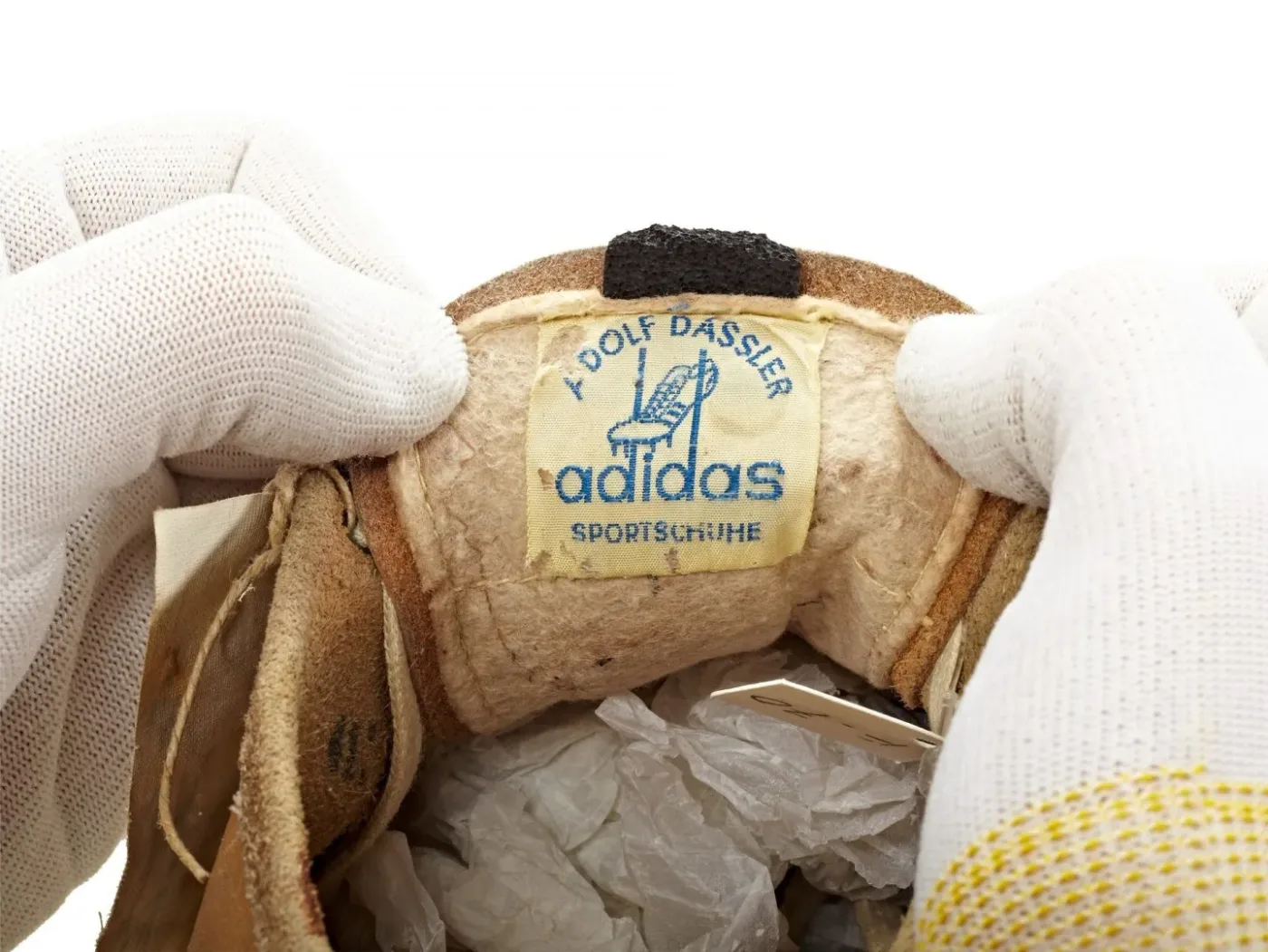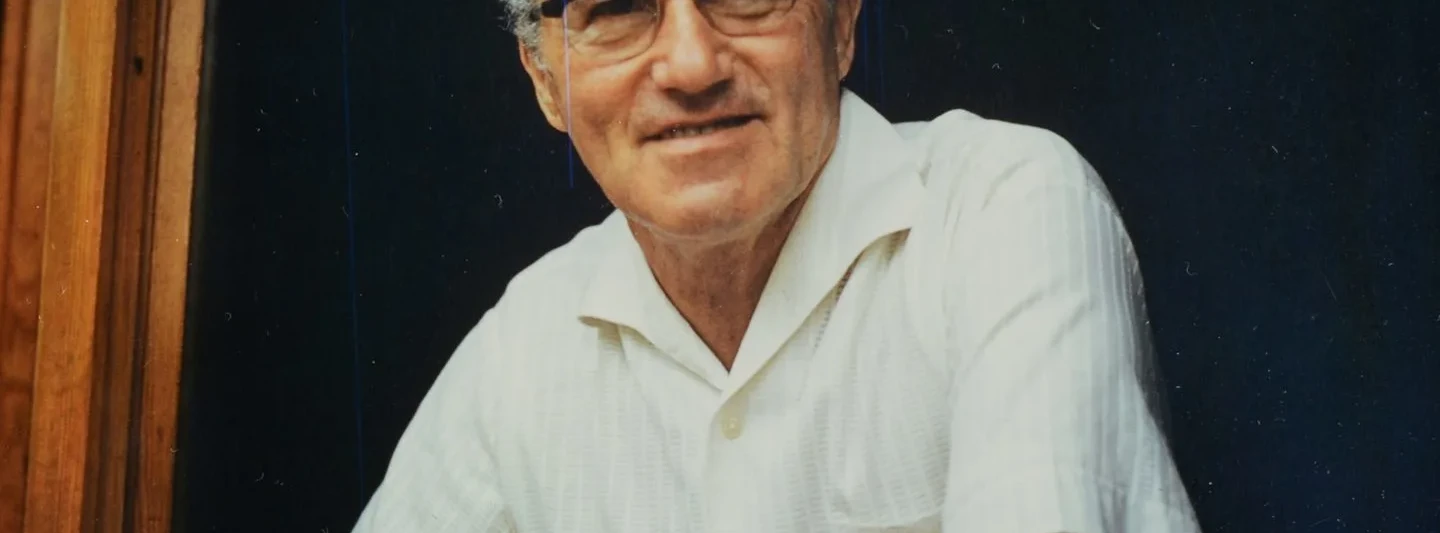
Adolf Dassler: The Creative and Innovative Leader Behind adidas
Just how did a sports-mad shoemaker in rural Germany build one of the world’s most successful sports companies? Read on to understand the vision, drive and creativity of this remarkable entrepreneur.

adidas is one of the world’s most successful sports companies, with an annual revenue of more than € 23bn and a workforce of 60,000 around the world, but it started as a family business driven by the innovation and passion of a German man named Adolf Dassler.
Adolf Dassler lived his whole life in a small rural town in Bavaria and created his first set of sports shoes by hand. His business almost collapsed on several occasions before it eventually became a global success. His remarkable life is a story of creativity, ingenuity, and, above all, a passion for sport.
Adolf Dassler: his early life
Born 1900, in the town of Herzogenaurach, Germany, Adolf Dassler was the youngest of four siblings. His father Christoph was a tailor and his mother Pauline ran the family laundry business. Adolf completed high school and following the wishes of his father entered an apprenticeship to become a baker. Although he finished this training, a life of bread making did not hold much appeal, so he decided instead to learn the skills of shoemaking.
Away from work, Adolf’s main passion was sport. Accompanied by his childhood friend, Fritz Zehlein (the son of a local blacksmith, who plays a key role later in the story), he played and competed in numerous sports including track and field, football, boxing, ice hockey, skiing and ski jumping. Through exposure to such a wide variety of sports he made a key observation that would later be the genesis of his success: he observed that all athletes essentially wore the same shoes.
"Adolf realized that if footwear could be designed specifically to meet the demands of the individual sport, it would give the wearer a tremendous advantage. This idea was to become the backbone of his future company, adidas."
World War I
Before he could begin turning his sports shoe idea into a business, Adolf Dassler was conscripted to the German Army in the late stages of World War I. When he returned to Herzogenaurach in 1919, Germany was stricken by post-war economic depression. Jobs were scarce, but determined not to let his dream die, and using characteristic creativity, Adolf converted the old laundry shed at the back of the Dassler family home into a shoe workshop. Using the shoemaking skills he had learned, he made money by repairing footwear for the local population.
This finally gave him the time and resources to develop his first pairs of specialist sports shoes. One of his first innovations was a pair of spiked running shoes for track and field athletes, at the time this a brand-new concept for the sport. They featured hand-forged metal spikes supplied by the local blacksmith now run by Adolf’s childhood sports mate Fritz Zehlein.
The Dassler Brothers’ Shoe Factory is born
Adolf was as innovative in his manufacturing processes as he was in his shoe designs. To solve the problems caused by unreliable electricity supply he rigged a leather milling machine to a bicycle that was pedaled by the company’s first employee.
Adolf was also joined in his endeavor by his older brother Rudolf Dassler and on July 1st, 1924 they registered their company ‘Gebrüder Dassler, Sportschuhfabrik, Herzogenaurach’ (‘Dassler Brothers Sports Shoe Factory’, Herzogenaurach). By 1925 their fledgling startup had three employees based in their one-room workshop, producing leather football boots with nailed studs, as well as spiked track shoes. As the German economic situation improved, business picked up and the brothers relocated to a bigger building in Herzogenaurach where they invested in new machinery and expanded their production.
Adolf aims for Olympic success
In the late 20s and early 30s the main global sporting events were the Football (soccer) World Cup, and the Olympic Games. The Dassler brothers believed that if they could get their shoes on the feet of athletes it would help these competitors succeed and authenticate the quality of the Dassler product. Their first success came at the 1928 Olympics in Amsterdam when Adolf gave German distance runner Lina Radke a pair of his spiked track shoes. It was the first time women had been allowed to compete in the 800m distance and Lina won the race with a World Record time.
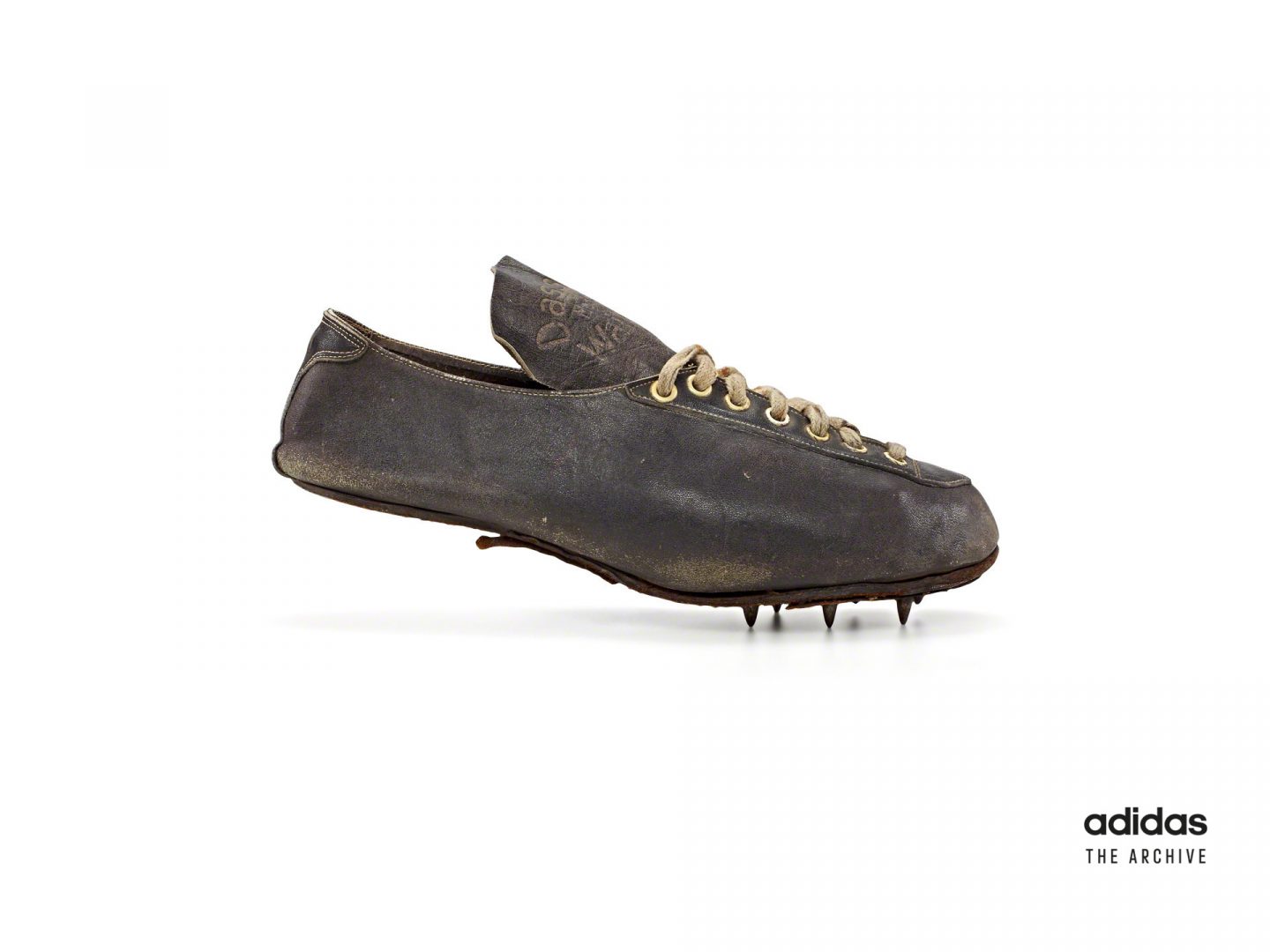 The original track spikes worn by Lina Radke as she won gold at the 1928 Olympics, now preserved in the adidas Archive. ©Studio Waldeck Photographers
The original track spikes worn by Lina Radke as she won gold at the 1928 Olympics, now preserved in the adidas Archive. ©Studio Waldeck Photographers
The innovative technology in Adolf’s sports shoes was inspired by the individual needs of the athletes he worked with. As part of the creative process he also integrated testing and feedback to ensure the products were the best that they could be.
He was quick to form a relationship with the German National Track & Field team, through coach Josef Waitzer. This partnership not only provided excellent feedback for product development, it ensured that a lot of German athletes would wear Dassler shoes at the Olympic Games. At a time when no athletes had professional sponsorship this was an inspired piece of marketing strategy from the Dassler brothers.
They had success with German athletes at the 1932 Los Angeles Games and for the 1936 Berlin Olympics they decided to expand the idea to an international audience.
Jesse Owens and Adolf Dassler
Adolf developed a relationship with the up-and-coming Black American athlete Jesse Owens. When Jesse lost his track shoes on the way to the Games in Berlin, photos from the time suggest that Adolf stepped in to help, meeting with the athlete and providing him some ‘Dassler Brothers’ shoes to try out. Evidence of what happened after that meeting is inconclusive, but legend has it that Jesse wore the Dassler shoes as he went on to win four gold medals. What we do know for certain is that Jesse stayed in contact with Adolf Dassler after this event, and later became an ambassador for the company adidas.
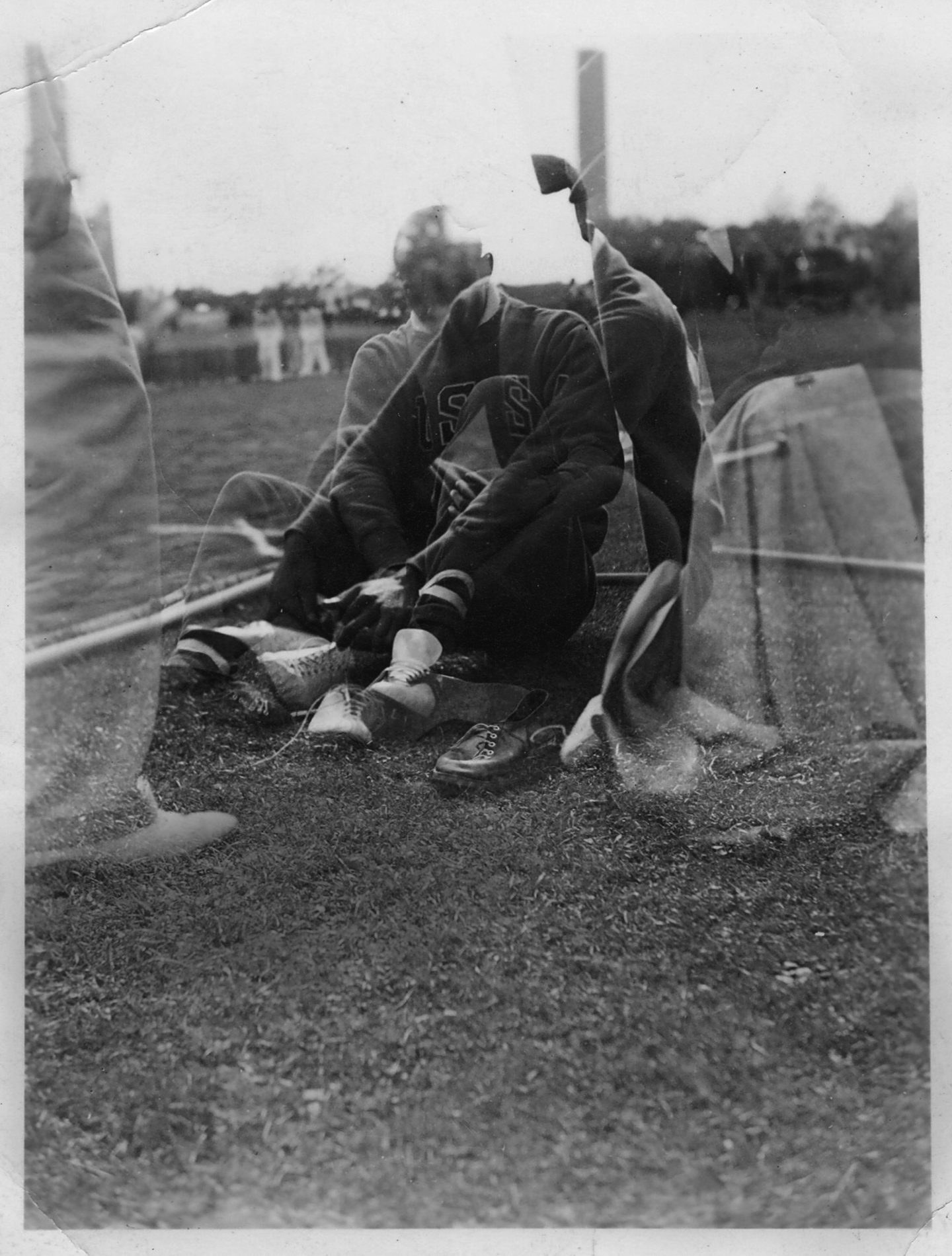 This poor-quality photo is believed to be the only one that exists from the moment that up-and-coming American athlete Jesse Owens tried on a pair of ‘Dassler Brothers’ track shoes supplied by Adolf Dassler. In their haste to capture the moment the photographer has double-exposed the film with two shots, creating the ghost-like image.
This poor-quality photo is believed to be the only one that exists from the moment that up-and-coming American athlete Jesse Owens tried on a pair of ‘Dassler Brothers’ track shoes supplied by Adolf Dassler. In their haste to capture the moment the photographer has double-exposed the film with two shots, creating the ghost-like image.
Adolf’s association with Jesse Owens may have had consequences way beyond product marketing. At the end of World War II when American troops were dismantling the apparatus of the Nazi regime, they destroyed factories that had been connected to the war effort. Because the Dassler brothers’ factory had been taken over to make weapon components at the end of the war it was going to be razed. However, the story goes that when American officers heard of the company connection with Jesse Owens and the 1936 Berlin Olympics, the factory was spared.
Marriage and children
During this period of company success in the 1930s, Adolf Dassler also started courting his future wife. Adolf met Käthe in 1932. He was developing his shoemaking knowledge and skills at the Berufsschule (vocational school) in Pirmasens, Germany. One of his instructors was Franz Martz, a master-producer of lasts, whose daughter caught the attention of Adolf. They started a relationship and were married in 1934 after which Käthe moved to the town of Herzogenaurach. They had five children, Horst (1936), Inge (1938), Karin (1941), Brigitte (1946), and the youngest daughter, Sigrid (1953). Horst Dassler went on to run adidas alongside Käthe after Adolf’s death.
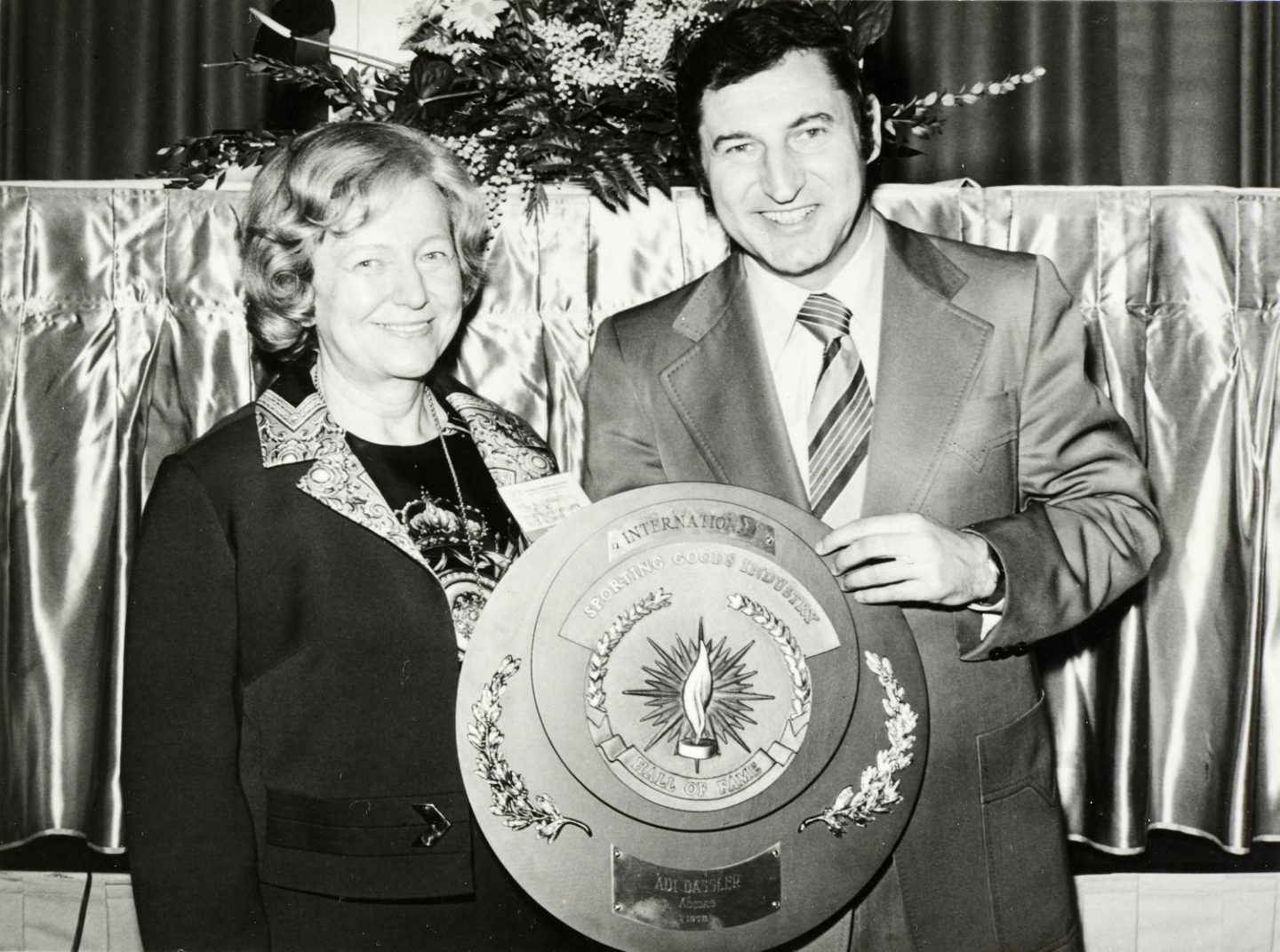 Käthe Dassler with her eldest son Horst in 1978. They ran the company together for several years after Adolf Dassler’s death.
Käthe Dassler with her eldest son Horst in 1978. They ran the company together for several years after Adolf Dassler’s death.
The Nazi Party and Dassler life in wartime Germany
The brothers Adolf and Rudolf Dassler joined the National Socialist Party on May 1st, 1933 and remained members until the end of the war in 1945. No evidence has been found to suggest that Adolf joined the party out of a strong personal conviction. It was common at the time for company owners to join as part of an arrangement with the new National Socialist regime which would help guarantee the continued success of the business.
However, as the Nazi Party started on a path to war the future of the Dassler Brothers Sport Shoe Factory seemed uncertain.
Initially, the brothers were allowed to operate a limited production of sports footwear but struggled to find good materials and staff. Further disruption to the business occurred in 1940, when Adolf Dassler was conscripted into the German Army (Wehrmacht) and started training as a radio operator, stationed in nearby Zirndorf. He contested his call-up and was finally discharged in 1941 when it was determined that his skills were essential for the operation of the Dassler factory.
Another factor disrupting business was the simmering tension between Adolf and Rudolf which now started to bubble over. The brothers had different ideas about how to keep the business alive during World War II and actually made the decision to part ways in 1941 (before finding it was impossible because of the war). At this time Adolf and Rudolf’s families lived together alongside the aging Dassler parents. The family and business relationships were put under further strain when Rudolf Dassler was drafted into the German Army in 1943 leaving Adolf alone to run the factory.
Later in 1943, the sports shoe business built by the brothers was almost entirely ruined. ‘Total War’ had been declared by the Nazis and to avoid the complete shutdown of the company, Adolf Dassler was urged to become supplier to the Nuremberg firm Schricker & Co, which was producing a basic anti-tank missile launcher. The Dasslers’ factory machinery was replaced, staff were retrained and shoe production was gradually wound down. The factory continued producing parts for Schricker & Co until the end of the war, although evidence suggests that Adolf still tried to repair and produce a few pairs of shoes in parallel.
Post-war
At the end of World War II, Germany went through the process of denazification which impacted many German citizens in one way or another. The Dassler brothers’ factory had been saved from destruction but the family were still involved in the denazification process.
Adolf Dassler was initially categorized as being a ‘Lesser Offender’ and the company was put under the supervision of a trustee. This made it very difficult for Adolf to re-start his sports shoe business. Then, through a process of appeal he was able to show that he had never been an active supporter of the party. He leaned heavily on testimony from respected residents of Herzogenaurach, employees he had helped, and even a Jewish friend who he had taken in and protected from the Nazis. His degree of party affiliation was eventually reclassified to the category of ‘Follower’ and he was able to resume control of the company as an owner once again.
The family split and the origins of Puma
The stress of the war, and the years immediately afterwards created irreparable division between Adolf and Rudolf Dassler. They officially split up their company in 1948.
They divided the firm’s assets and, following this, became business rivals. Rudolf formed his own sports shoe company which eventually became known as Puma. The global headquarters of both adidas and Puma are still based in the town of Herzogenaurach.
The creation of the company ‘adidas’
The years immediately after the war were extremely difficult for the business as Adolf Dassler tried to re-establish it in a depressed German economy. More than ever he had to rely on his creativity and entrepreneurial spirit. He had made a connection with American military officers who were billeted in the Dassler family home and through this relationship was able to source leftover wartime materials. In the absence of leather, he designed shoes made from aircraft fuel tank liners, rubber rafts and canvas from tents.
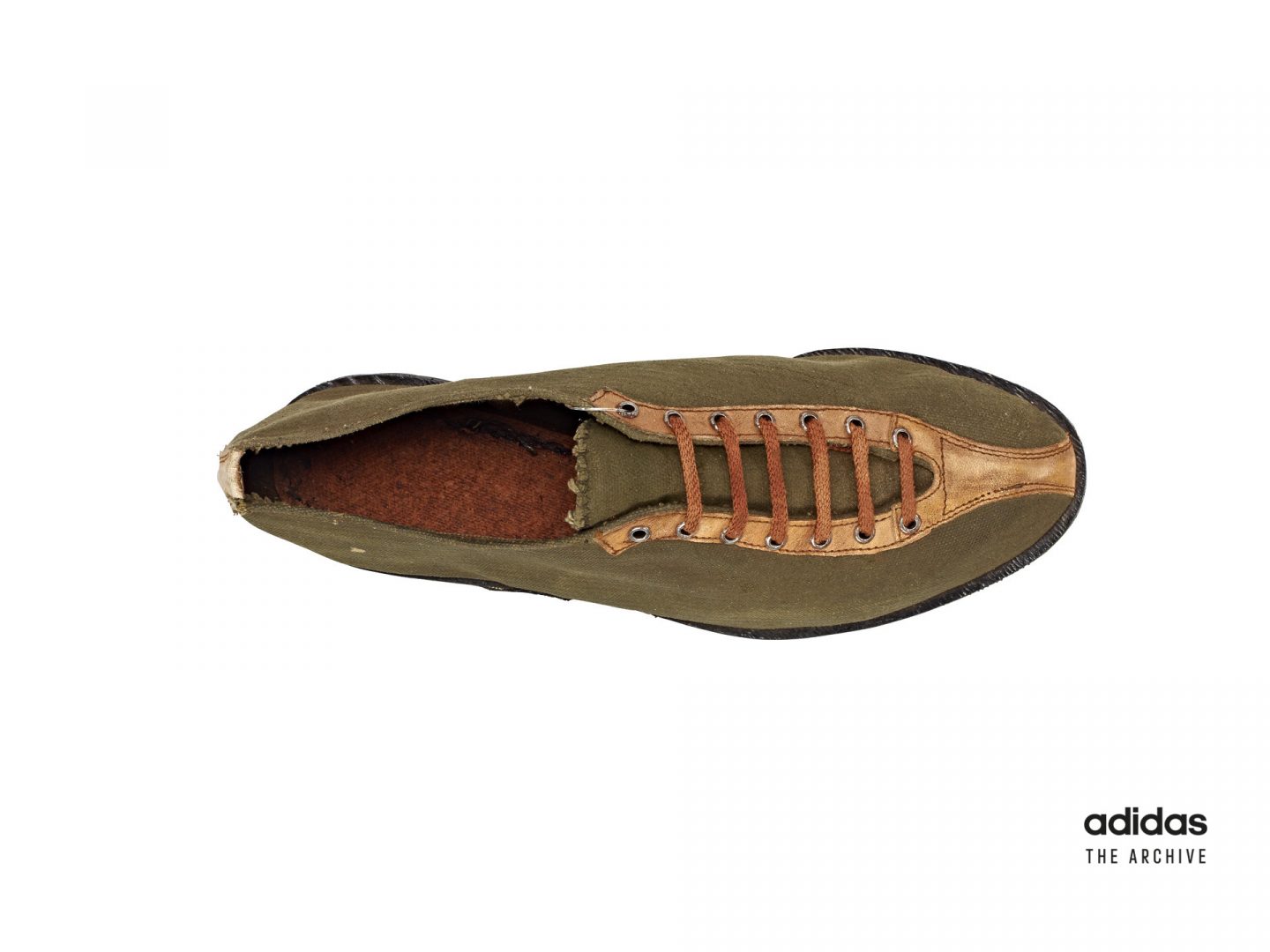 In the period immediately after the war supplies of traditional shoemaking materials like leather were in short supply in Germany. Adolf resorted to producing shoes from leftover war materials, such as this one made from tent canvas. ©Studio Waldeck Photographers
In the period immediately after the war supplies of traditional shoemaking materials like leather were in short supply in Germany. Adolf resorted to producing shoes from leftover war materials, such as this one made from tent canvas. ©Studio Waldeck Photographers
Following the split from his brother, Adolf wanted to ensure his products had a distinctive look, so that people would clearly recognize them on the feet of athletes. He experimented with the decorative straps on the side of his shoes, varying the number and adding color. Eventually he settled on three straps and the ‘brand with three stripes’ was born. Adolf started using the 3-stripe logo as the trademark of the company in 1949.
"To name his new company Adolf planned to use parts of his own first and last names. ‘Addas’ was the original choice, but this application was rejected as it was too similar to the name of a children’s shoe manufacturer (called adda-adda)."
Instead of totally rethinking the name Adolf (whose nickname was Adi) simply added a handwritten ‘i’ to the printed form. Thus, the name adidas was born. The original company name was ‘Adolf Dassler “adidas” Sportschuhfabrik’ – registered on August 18, 1949.
adidas' breakthrough
As the chaos of war subsided and the West German economy started to recover, Adolf (Adi) Dassler and his wife Käthe led adidas into a decade of growth and success. Käthe was the perfect business partner for Adi – she was a welcoming host, adept at understanding people of different cultures, and an adaptable businesswoman. She took a role at the center of the business and soon became respected by staff and customers alike. Her involvement in the sales and people-management side of the business allowed Adolf the space to concentrate on what he did best, working with athletes to innovate performance footwear.
Adolf was a dedicated note taker. He keenly studied the movements of athletes to gain ideas for his products, especially when sport began to be televised. In 1950, he celebrated his 50th birthday and was still playing a number of sports himself, providing insights with which to create adidas shoes. Many of the sportspeople he worked with had no specialist footwear for their sport before he created it. His innovative designs changed the game of thousands of athletes all over the world.
"Adolf Dassler’s drive for innovation and perfection was summed up by his motto of ‘only the best for the athlete’."
Who was Adolf Dassler?
- Born in 1900 in the rural town of Herzogenaurach, Germany.
- Keen sportsman who played and competed in numerous sports throughout his life. His experience as an athlete gave him the idea of creating specialist sporting footwear.
- Started his first shoemaking business with brother Rudolf Dassler in the 1920s. Spike track shoes and studded football boots were some of their first sport-focused products.
- A canny marketer. Before official sports-sponsorship existed, he recognized the potential of getting his product on the feet of top Olympic athletes such as Lina Radke and Jesse Owens.
- Married Käthe Dassler in 1934. She went on to run adidas with their son Horst Dassler after Adolf passed away in 1978.
- An innovative and creative thinker. His ingenuity helped his fledgling shoemaking business survive the difficult post-war period in Germany. Adolf formed adidas in 1949.
- Dedicated professional life to creating the best product for athletes and their individual sporting needs. 'Only the best for the athlete' was one of his guiding mottos.
1954 World Cup and The Miracle of Bern
Innovation and improvement in the design of the football boot (or soccer cleat) was one of Adolf’s ongoing obsessions. His expertise in this area meant he regularly advised the West German National Football Team, a partnership that led to one of the most famous events in the histories of both adidas and German football.
The event was the 1954 World Cup which took place in Switzerland. The strong favorites to win the tournament were the Hungarian national side who came into the finals unbeaten in four years. West Germany had lost to them 8-3 in the group stages, but thanks to some good results in the knock-out competition they were going to meet them again in the World Cup final, played in the city of Bern.
One secret advantage the West Germans held was the adidas boots that they wore. They were half the weight of the traditional English-made boots worn by the Hungarians, and crucially featured removable screw-in studs that could be changed to suit the weather conditions.
As the rain fell on World Cup Final day and the pitch at the Wankdorf Stadium deteriorated, Adi advised the West Germans to change to a longer stud. As the game progressed it became clear that they had better grip in the muddy conditions and were quicker on their feet than the Hungarians, whose rain-soaked boots were slowing them down.
The West German team came from behind to stage a thrilling 3-2 win, which became known in Germany as the ‘The Miracle of Bern’ (Das Wunder von Bern). When the German coach Sepp Herberger publicly praised adidas products for contributing to the team’s success, the popularity of the brand exploded in Germany. The 1954 World Cup Final, which was the first to be televised, also introduced the adidas brand to an international audience.
Global domination as Adolf Dassler continues to innovate
By the 1960s the company adidas employed more than 500 people and was the world’s largest producer of sports shoes. Despite his increasing age and company success Adolf Dassler continued to obsessively innovate – creating adidas shoes that were lighter, more comfortable, and which fulfilled the needs of the athlete.
In 1963, Adolf’s work with the German National Football Team gave him the idea for a shoe that could help athletes avoid fungal foot infections in the changing rooms. The result was the Adilette – now a hugely popular leisure shoe. In 1967, he produced the first track and field warm-up suit – the tracksuit was born and a whole new world of sports apparel was created.
In the 1960s Adolf and Käthe’s son Horst became a strong leader in the business. Horst Dassler recognized the potential of new sports and helped adidas grow their market in America. Amongst other things he applied Adolf’s innovative spirit to the development of basketball shoes and the Superstar was born – now a streetwear icon. Adolf was married to Käthe until his death in 1978, aged 77. Käthe continued to run the business with her son Horst until she passed away in 1984.
"Adolf Dassler’s vision changed sport forever. His pursuit of excellence, his attention to detail, and the way he prioritized the needs of the athlete are values that still guide the company he created all those years ago."
His designs touched the lives of athletes all over the globe and became the catalyst for a global sport shoe industry that is now worth tens of billions of dollars a year. Yet, even as a wealthy and successful man Adi remained humble , always returning to where he was most comfortable – in the company of sports people, thinking about how he could improve performance with his products.
Related Stories

